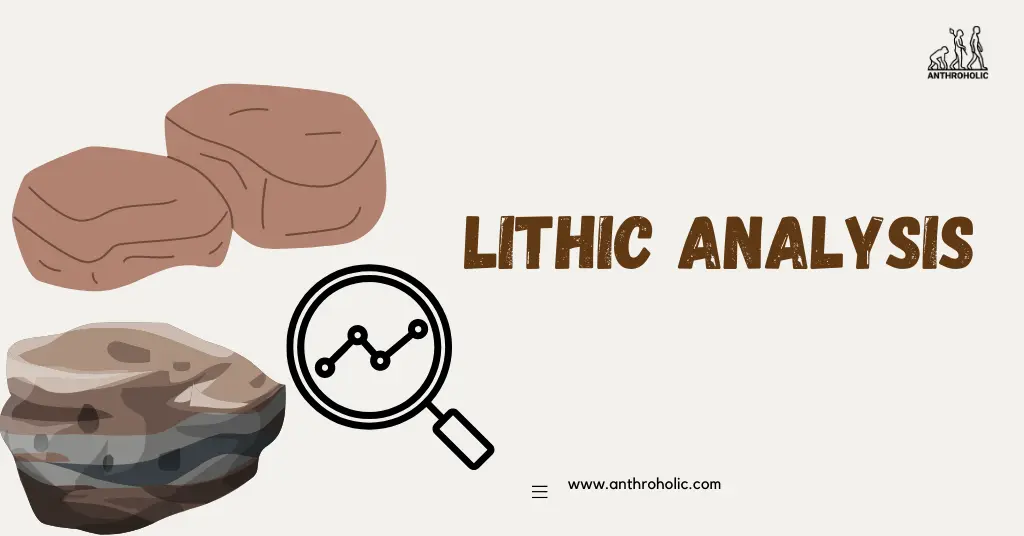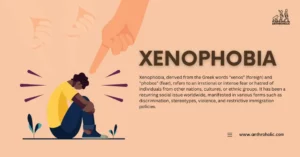AI Answer Evaluation Platform Live Now. Try Free Answer Evaluation Now
Lithic Analysis
Lithic analysis refers to the detailed study of stone tools and other chipped stone artifacts using scientific techniques. It allows archaeologists to understand human behaviors and adaptations in prehistoric times [1].

Techniques Involved in Lithic Analysis
Several scientific techniques help archaeologists understand the life of prehistoric humans better.
- Typological Analysis: This technique involves classifying stone tools into types based on their shape and size. It helps in identifying the chronology of different tool types, contributing to understanding the evolution of human technology [2].
- Functional Analysis: This technique aims to determine the use of the tool, often by examining wear patterns on the tool’s surface. Use-wear analysis and residue analysis are common methods under functional analysis [3].
- Technological Analysis: This includes studying the raw materials, toolmaking techniques, and sequences used by ancient toolmakers. Flake analysis and refitting are standard practices here [4].
- Spatial Analysis: Spatial analysis focuses on the geographical information of lithic artifacts to understand activity areas and site organization [5].
Importance of Lithic Analysis
The critical roles played by lithic analysis in archaeological research include:
- Understanding Technological Evolution: Lithic analysis helps trace the evolution of early human technology. The shift from simple hand axes to more sophisticated tools can provide insight into cognitive developments in early humans.
- Identifying Social Patterns: Some stone tools could have held symbolic or social value, providing clues about social structures in prehistoric societies.
- Studying Migration and Trade: The raw materials used for toolmaking can provide insights into early human migration and trade routes.
- Climate Change Study: Understanding the choice of raw materials and tool types can also reveal information about the climatic conditions during that period.
Detailed Case Study: The Oldowan Tools
One of the most significant applications of lithic analysis is in the study of Oldowan tools. Table 1 below demonstrates the use of different lithic analysis techniques in studying these tools:
| Technique | Insights on Oldowan Tools |
|---|---|
| Typological Analysis | Identified as simple chopping tools, flakes, and cores |
| Functional Analysis | Revealed uses like meat and plant processing |
| Technological Analysis | Showed the tools were made using simple “hard hammer” percussion technique |
| Spatial Analysis | Indicated the use of localized resources in tool making, implying limited mobility of early hominins |
Raw Materials in Lithic Analysis
The study of the types of raw materials used to manufacture stone tools can provide valuable insights into the resource availability, resource exploitation, and mobility of early humans. Lithic raw materials include chert, obsidian, flint, quartzite, and others. The preferential selection of specific materials can indicate the knowledge and skills of the prehistoric toolmakers.
Identifying Raw Materials
- Macroscopic Identification: Basic visual examination, based on color, texture, and hardness.
- Petrographic Analysis: This involves studying thin sections of the lithic artifact under a microscope, identifying the mineral composition and structure.
- Geochemical Analysis: Techniques like X-Ray Fluorescence (XRF) and Neutron Activation Analysis (NAA) identify the chemical composition of the materials.
Insights from Raw Material Study
| Raw Material | Insights |
|---|---|
| Obsidian | High-quality material that indicates long-distance trade or migration |
| Local Cherts | Suggests short-distance mobility and local resource exploitation |
| Exotic Materials | Implies knowledge of distant terrains and resources |
Refitting Studies in Lithic Analysis
Refitting, or conjoining, involves piecing together lithic artifacts or flakes that were once part of a larger whole. This process allows researchers to reconstruct the sequence of flake removal and gain insights into the toolmaking process.
Significance of Refitting Studies
- Understanding the technological skills of prehistoric toolmakers
- Reconstructing the sequence of flake removal
- Identifying the different stages of tool production
- Studying site formation processes
Lithic Analysis in the Digital Age
Advancements in digital technology have revolutionized lithic analysis. Techniques such as 3D scanning and modeling can create virtual representations of lithic artifacts, preserving the data digitally and allowing for in-depth, non-destructive analysis. These tools also facilitate sharing and collaborative studies among researchers across the globe.
| Digital Technology | Application in Lithic Analysis |
|---|---|
| 3D Scanning | Creates virtual models of lithic artifacts |
| Digital Microscopy | Enables high-resolution examination of use-wear and residues |
| GIS Tools | Facilitates detailed spatial analysis |
| Database Management Systems | Allows storage, retrieval, and management of lithic data |
Conclusion
Lithic analysis is a multifaceted discipline, combining typological, functional, technological, and spatial analysis techniques to provide detailed insights into human prehistory. It plays a vital role in deciphering the technological evolution, social patterns, migration, trade, and climatic conditions of ancient human societies. As research continues, we can expect to uncover more exciting revelations about our prehistoric ancestors.
References
[1] Andrefsky, W. (2005). Lithics: Macroscopic approaches to analysis. Cambridge University Press.
[2] Shott, M. (1996). An exegesis of the curation concept. Journal of Anthropological Research, 259-280.
[3] Keeley, L. H. (1980). Experimental determination of stone tool uses: a microwear analysis. University of Chicago Press.
[4] Cotterell, B., & Kamminga, J. (1987). The formation of flakes. American Antiquity, 675-708.
[5] Wandsnider, L. (1992). The spatial dimension of time. Archaeological Method and Theory, 4, 1-54.




